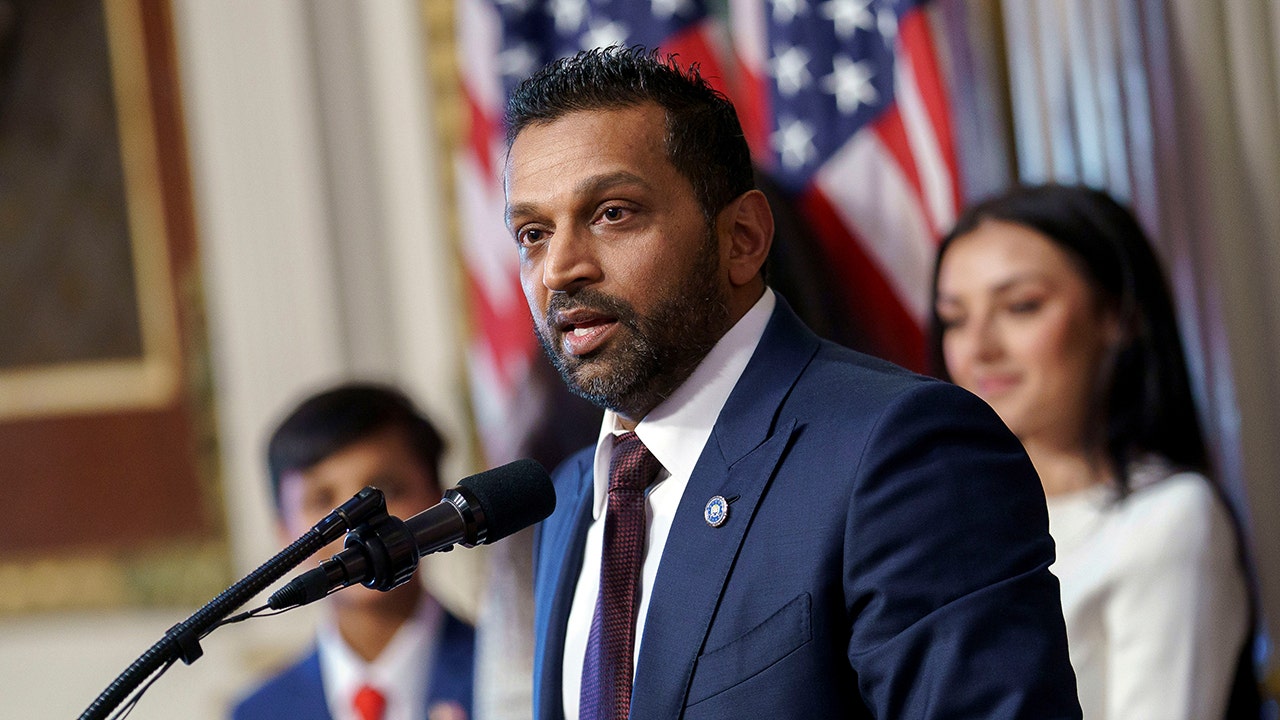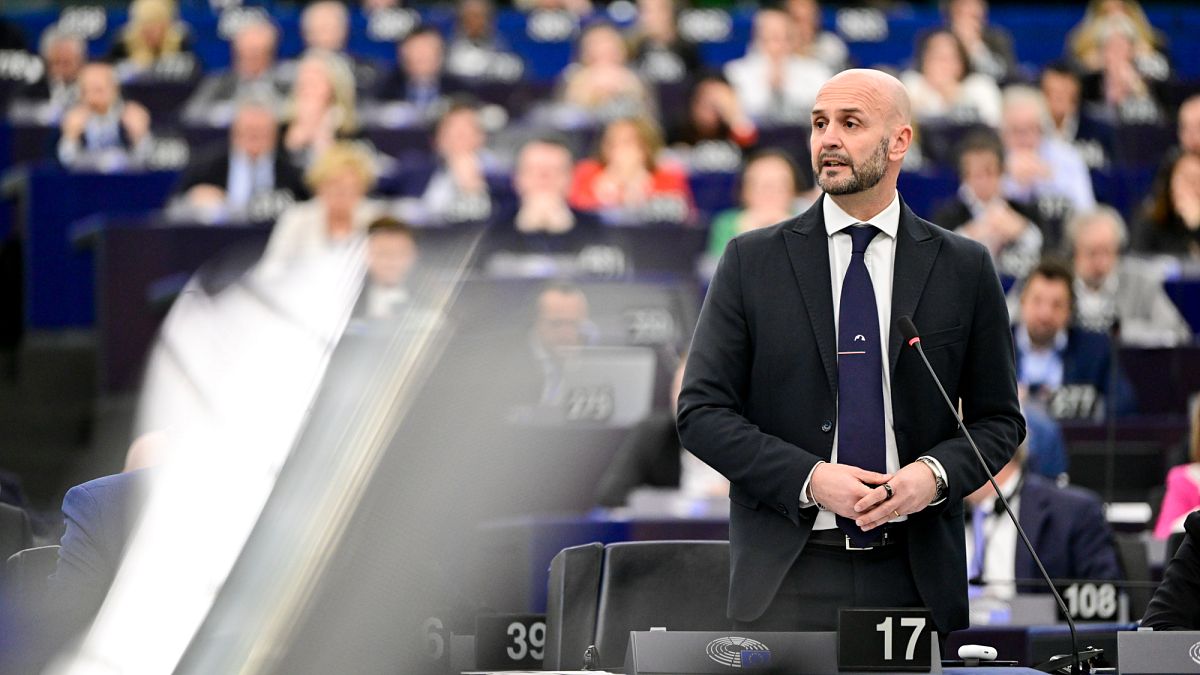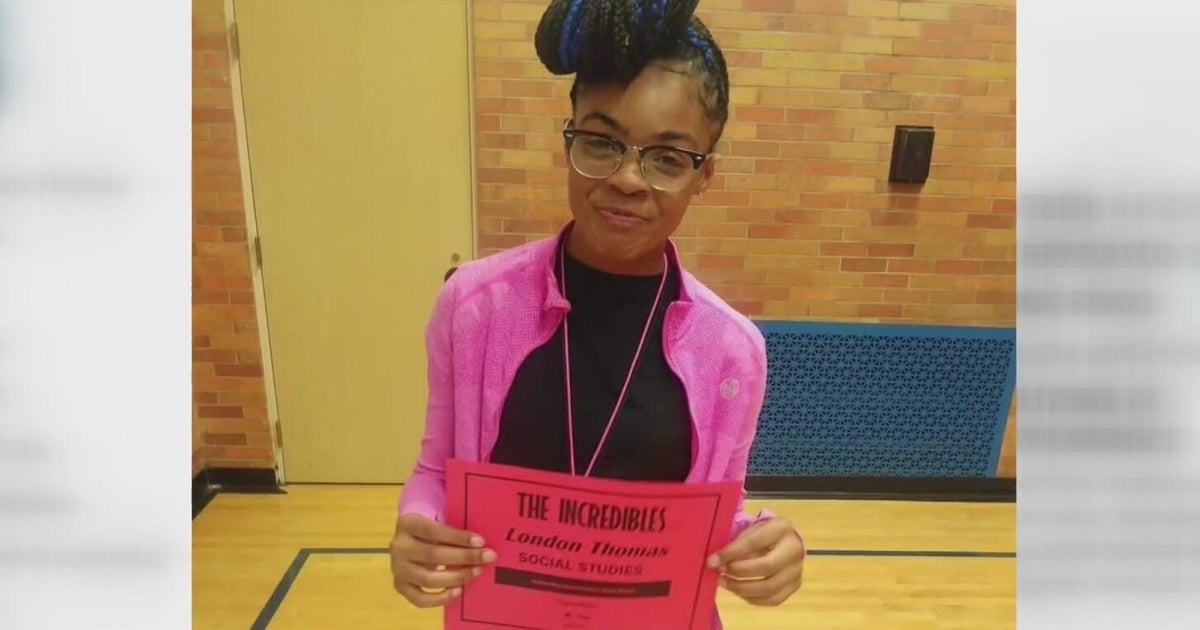Education
Penguins in Your Fridge? These 7-Year-Olds Have Climate Solutions.

Standing at the front of her classroom at Slackwood Elementary School north of Trenton, N.J., one afternoon in June, Michelle Liwacz asked her first graders to consider a problem: Antarctica is getting warmer. What could the penguins that live there do to adapt?
The children, most of them age 7, murmured excitedly. One boy said the birds could cool off in the water, but reconsidered after remembering all the hungry orcas awaiting them there. “Maybe they could migrate to another cold place, like the United States in winter?” the boy, whose name is Noah, asked. A girl named Aliya suggested that humans give them floaties. Gabi thought maybe the penguins could build igloos. A few of them, Gabi added, could live inside her fridge.
As the school year draws to a close, New Jersey has the distinction of being the first, and so far only, state to require that climate change be taught to all students from kindergarten through 12th grade. The topic is woven into lesson plans across most subject areas, even physical education classes.
The standards are built on a striking premise: Even as storms eat away New Jersey’s coastline, snow days become obsolete and wildfire smoke poisons the air outside, climate change can be taught to the youngest learners without freaking them out.
Tammy Murphy, the wife of Governor Phil Murphy, a Democrat, was the driving force behind the new standards. She said climate change education was vital to help students attune to the planet’s health, prepare for a new economy based on green energy and adapt to climate shifts that promise to intensify as this generation of children reaches adulthood.
But the state’s method of teaching its youngest learners about climate change arguably does something more profound: Instead of focusing on the doom and gloom, the standards are designed to help children connect with what’s going on in the natural world around them, and, crucially, learn how to solve problems.
“It’s perceived as such a heavy topic, as something we have to wait to talk about until they’re older,” said Lauren Madden, a professor of elementary science education at the College of New Jersey who researches and offers guidance on the implementation of the standards.
“When we shield them from so much, they’re not ready to unpack it when they learn about it, and it becomes more scary than when they understand they’re in a position where they can actively think about solutions,” Dr. Madden said. “When you take kids seriously that way, and trust them with that information, you can allow them to feel empowered to make locally relevant solutions.”
Ms. Murphy, who also serves on the board of former Vice President Al Gore’s Climate Reality Project, began meeting in 2019 with more than a hundred educators to discuss creating new standards. In June 2020, the state board of education voted to require climate change be taught in seven out of nine subject areas, including social studies and world languages. The board is expected to vote this summer on whether to require that climate change be expanded to the two remaining subject areas, English language arts and math.
In advance of that decision, some voices of dissent have surfaced. At a public hearing in May, critics pushed for debunked denialism theories about climate to also be taught and said teaching climate science was a form of “indoctrination.” One speaker said the use of the term “global” in the standards would make children uncomfortable about calling themselves American.
But a poll conducted in May by Fairleigh Dickinson University in Madison, N.J., found that 70 percent of state residents supported climate change being taught at schools. Dan Cassino, a professor who directed the survey, said it could be one of the Murphy administration’s most popular policies. That support mirrors nationwide findings that show the overwhelming majority of Americans, on both sides of the political divide, want their children to learn about climate change.
At Slackwood Elementary, a public school serving about 250 students from kindergarten through third grade, several parents said they were delighted by the climate lessons. It relieved them of some of the burden of trying to explain climate change and extreme weather, they said, and tapped into childrens’ instinctive curiosity about animals and nature.
“If they’re being more respectful to the environment, they’ll be good human beings,” said Niral Sheth, whose youngest daughter, Navya, is in Ms. Liwacz’s first grade classroom. “They need to know what they can do. I don’t want them to be left behind.”
Many of the students at Slackwood are English language learners — one teacher counted 17 languages spoken. More than half of the students qualify for free or reduced-cost lunch; the school has a pop-up pantry that sends bags of food home to families in need.
Outside, in a corner of the playground, there’s a fenced-in butterfly garden, a compost bin, and a soil bed where kids have tested which type of fertilizer, a chemical commercial variety or a natural blend, best helped plants ( the natural one came out ahead).
Inside the school one recent morning, Ms. Liwacz was showing a video that led her first graders, who were gathered on the carpet, in a singalong.
“Our Earth is a very, very, very big place,” two dozen tiny voices sang out, more or less in unison. “It is covered by water and land. It has five huge oceans where we can swim. And seven continents where we can stand.” The song went on to describe how North America was home to the United States, at which point Navya, who is 6, did some loud ad-libbing.
“Navya, what’s your problem with the North America part?” Ms. Liwacz asked, after the song was over.
“Because it doesn’t say Canada and Mexico,” Navya replied. “So I have to change the last words into Canada and Mexico.”
“You can’t forget our neighbors,” Ms. Liwacz said. “It’s bothered her since Day One.”
At Slackwood, children are taught that human activities, such as transportation, heating, and raising livestock, are overheating the planet, as one classroom book says, “making Earth feel unwell.”
Yet the focus is on awareness and problem solving. Kindergartners are taught how everything is connected, along with the importance of pollinating insects. That has helped children see bees as friends rather than scary stinger-wielding foes, the principal, Jeanne Muzi said. First graders learn about composting, recycling and hydroponic gardening, and second graders explore pollution and plastic. After learning about floating garbage, one second grader said plastic should be prevented from getting into waterways in the first place, Ms. Muzi said.
“He’s seven,” Ms. Muzi said. “And in talking to him, I was like, wow, that is such a big idea.”
One morning late in May, Ms. Liwacz announced that her first graders would be talking about cause and effect, and that the day’s story was about what would happen if sharks disappeared.
Navya’s hand went up. “I learned, well, fish eat shark poop,” she said.
“Well, they do,” Ms. Liwacz replied, to a few giggles. “And fish need that, right? Why?”
Navya had a ready answer. “Because then all animals need food and water to, um, survive, and fish eat shark’s poop to survive,” she said.
“And so what if sharks disappeared?” Ms. Liwacz said.
“That’d be bad for the fish,” Navya said.
Ms. Liwacz next read a story detailing the role of sharks in keeping ocean water clean and ecosystems balanced, which in turn benefited land mammals. Then she paired the students to discuss what would happen if sharks vanished, prompting more chatter about the importance of poop.
A little later, during snack time, Ms. Liwacz showed a video about Eugenie Clark, a shark scientist and marine conservationist. Learning about scientists and other people working toward climate solutions is a focus at the school, as are ways of riding out extreme weather driven by climate change.
Last week, as dangerous smoke shrouded the skies, Ms. Liwacz and her first graders talked about how even though the Canadian wildfires were scary, they were able to stay safe indoors, and that the smoke would eventually abate.
“It makes them feel a part of what’s happening outside of school in the real world,” Ms. Liwacz said. “Of course, not all problems are going to be solved. But it’s getting them thinking, How can I fix this? How can I change this? What can I do with myself or with my friends or my community to help change what I see or what I noticed?”
The United Nations has underlined that idea, saying that education is crucial to addressing global warming, because of its power to shift students’ attitudes and consumption habits, help them discern fact from fiction and prompt them to take action.
Yet across the country, climate change is taught unevenly and often anemically. A 2016 study found that while climate issues were taught by three-quarters of public school science teachers, many students got less than two hours of climate education a year.
In some states, there has been strong resistance to incorporating climate science into classroom learning. Though none ban global warming education, according to Glenn Branch, deputy director of the National Center for Science Education, some states falsely frame climate science as a matter of debate. This spring, the Texas state board of education issued guidelines saying students ought to learn the “positive” side of fossil fuels.
At a recent conference in New Jersey about integrating the climate standards into primary schools, several educators said they were daunted about adding climate science to their lesson plans, especially given educational setbacks their students suffered during the pandemic.
They also said they needed more guidance. The state has set aside $5 million for climate change education grants, drawing applications from nearly half of New Jersey’s school districts.
Still, in a recent small survey of educators, Dr. Madden, the early education specialist, found that more than three-quarters worried that climate change might not be a priority in their district because of lack of subject expertise. Concerns about controversy have increased, too — with the percentage of educators who said teachers might avoid it because it was politically sensitive nearly doubling to 17 percent between June 2022 and December 2022.
Yet educators at the conference roundly agreed that climate change should be taught to give students a sense of agency that could allay the climate anxiety that is especially pronounced for young people worldwide.
Asked whether learning about climate change could be scary for children, Monica Nardone, a third-grade teacher in Trenton, all but rolled her eyes.
“We have lockdown drills” to prepare for school shootings, she said. “Seriously? How much more are we going to make them afraid?”

Education
A Teachers’ Union Is Spending Millions to Elect Its Boss Governor

He failed to qualify for matching state campaign funds and fell short of the threshold to participate in two upcoming debates as he runs for governor of New Jersey. His spokesman works for a consulting firm in Washington, D.C., and he has no paid campaign manager.
But Sean Spiller has something the other five Democrats running for governor don’t: a $35 million blank check from a group with close ties to the labor union he leads, the New Jersey Education Association.
For more than six months, Mr. Spiller’s image has been plastered on billboards, campaign mailers and front-door hangers throughout New Jersey. He has been featured in commercials, digital posts and, more than a year before November’s election, a full-page ad in The New York Times.
The publicity has been paid for by Working New Jersey, a super PAC funded largely with public schoolteachers’ union dues, according to a review of Internal Revenue Service records.
Since July, I.R.S. records show that a political arm of the teachers’ union has sent at least $17.25 million to Working New Jersey. The super PAC, in turn, has reported that it was prepared to spend as much as $35 million on behalf of Mr. Spiller, a science teacher by trade who draws a roughly $370,000 salary as president of the N.J.E.A.
Working New Jersey has already spent $8.3 million on television, digital and streaming ads, according to AdImpact, which tracks political spending.
The union’s unconventional strategy appears to have helped boost Mr. Spiller’s standing in the hypercompetitive race.
Early surveys indicated that Mr. Spiller, a little-known former mayor of Montclair, N.J., had limited political support. But recent polls have suggested that he is now tied for second place. Representative Mikie Sherrill has consistently been at the front of the pack, with Mr. Spiller and the mayor of Newark, Ras J. Baraka, and the mayor of Jersey City, Steve Fulop, close behind her.
But nothing about the race to replace the state’s term-limited governor, Philip D. Murphy, is certain with such a large and accomplished field of candidates. Fundamental changes to the rules that govern primaries have made it the state’s most volatile contest in recent history.
A poll conducted in January by Emerson College found that 56 percent of Democrats remain undecided.
The N.J.E.A. has long been among the state’s most powerful unions, with nearly 200,000 members and a willingness to take on political foes. Its involvement with the Working New Jersey PAC is among its most overt efforts to sway voters in a state election.
Mr. Spiller, who emigrated from Jamaica as a child, has said that as governor he would focus on expanding affordable housing, strengthening schools and defending New Jersey against President Trump’s policies.
Most of the Democratic and Republican candidates for governor are benefiting from spending by outside interest groups. But Mr. Spiller is the only candidate to have also raised so little on his own to directly fund his campaign. As of the most recent state filing, Mr. Spiller’s campaign had raised $183,000 in a race where every other prominent candidate collected more than $1 million — and several have taken in close to $3 million each.
In an interview, Mr. Spiller, 49, said there were metrics beyond fund-raising and the size of a campaign staff that were more indicative of support for his candidacy. He noted that he had submitted more signatures to get on the ballot than all but one other Democratic candidate.
He refused to directly address questions about whether he considered it a conflict of interest that he was benefiting so significantly from dues contributed by members of a union that employs him as president. He noted that other candidates had turned to real estate developers and Wall Street bankers for contributions, and that by sidestepping that funding stream he had avoided being beholden to their interests, if elected.
“Our campaign is based on fighting for working class folks,” he said.
He also dismissed the significance of falling short of the $580,000 campaign fund-raising threshold that would have qualified him for 2-to-1 matching funds for the June 10 primary. “If I called millionaires and very wealthy folks, I could meet goals,” he said.
By law, super PACs may raise and spend unlimited sums but are barred from explicitly coordinating with candidates’ campaigns. Officials with the N.J.E.A. and Working New Jersey said that Mr. Spiller had not been involved in allocating union funding or in any promotional efforts on his behalf.
“We recognized the need to put guardrails and protections in place to ensure that there was not a conflict of interest,” said Steven Baker, the union’s spokesman. “The candidate does not get to decide what is spent or how it is spent.”
Mr. Baker said Mr. Spiller also had no role in the union’s decision to set aside money for political advocacy or for its political arm to send millions to Working New Jersey.
A spokesman for Working New Jersey, Eddie Vale, said the same thing. “As an independent expenditure campaign, we cannot, and do not, coordinate with or talk to the Spiller campaign in any way,” Mr. Vale said.
To voters, however, the Spiller promotional material piling up in mailboxes may be largely indistinguishable from the types of ads paid for directly by his opponents’ campaigns. Each carries a tiny disclaimer: “not made with the cooperation or prior consent of, or in consultation with or at the request or suggestion of, any candidate, or any person or committee acting on behalf of any candidate.”
Specialists in campaign finance law say that Working New Jersey’s support for Mr. Spiller is part of a growing trend of outsourcing to special interest groups work traditionally done by campaigns.
Daniel Weiner, an election law expert at New York University’s Brennan Center for Justice, noted that Mr. Trump also relied heavily on super PACs for core campaign responsibilities.
“Every election cycle people push the envelope even further,” Mr. Weiner said.
The trend can be traced to the Supreme Court’s Citizens United campaign finance decision in 2010, which freed political action committees run by corporations and unions to spend unlimited sums on behalf of candidates.
“The theory was that these groups would not be interchangeable with candidates’ campaigns,” Mr. Weiner said. “Instead, the way they often work is they’re just sort of the alter ego of the campaign.”
Only New Jersey and Virginia hold governor’s races the year after a presidential election, and their results are likely to offer some of the nation’s earliest insights into voter attitudes toward Mr. Trump ahead of the 2026 midterm elections.
It is perhaps no surprise that New Jersey’s contest is on track to hit campaign spending levels that one top state elections official called “stratospheric.”
That’s true of super PACs, too.
In 2021, super PACs spent a record $13.4 million in support of all primary candidates for New Jersey governor. That record has already been dwarfed by the $35 million in anticipated spending by a single super PAC on behalf of Mr. Spiller.
In the days leading up to the March 24 deadline to qualify for matching funds, Mr. Spiller’s appeals to potential donors took on an urgent tone.
“I need you to donate $20 or more,” one email stated. “I’ll be honest with you,” another read, “we’re not yet where we need to be.”
But his shortage of funds appears to have had no effect on Working New Jersey’s ability to spread his message.
Officials running the super PAC said that they had conducted 13 internal polls to measure Mr. Spiller’s standing in the race and are prepared to continue targeting Democratic primary voters on television, social media, billboards and at their homes.
Last Friday, people affiliated with Working New Jersey hung fliers on doors in Cranford, N.J. — an effort that the officials said was part of a statewide canvassing blitz that had already reached 661,000 homes. At one house, after leaving a door hanger, the representative sent a text message to the registered Democrat in the household with a link to the super PAC’s website: “New Jersey needs fighters like Sean to stand up to the Trump administration’s radical agenda and do something about rising costs.”
Should he lose, Mr. Spiller is likely to face questions about the wisdom of investing teacher dues so heavily in a single political campaign.
“He’s going to have to face his members” and explain spending millions of dollars, said Matthew Frankel of the Sunlight Policy Center, a nonprofit advocacy group critical of N.J.E.A. leadership.
“On that,” Mr. Frankel added, “I think he’s in a world of hurt.”
Mr. Baker, the union spokesman, said that the N.J.E.A.’s endorsement of Mr. Spiller and financial support for his candidacy were based on a conviction that he could “most forcefully and effectively advance” members’ priorities.
Those priorities, he said, are multifaceted and include improving pension allocations, fully funding schools and defending freedom to read initiatives.
“When you look at the national landscape, voters are very aware of what’s at stake in a state like New Jersey,” Mr. Baker said.
Education
Stanford Protesters Charged With Felonies for Pro-Palestinian Occupation

Prosecutors on Thursday filed felony charges against 12 pro-Palestinian protesters — all but one of them a current or former student at Stanford University — for breaking into administration offices in June and causing extensive damage.
The charges were among the most severe levied against participants in last year’s pro-Palestinian demonstrations on college campuses. More than 3,000 people were arrested at college protests and encampments in the spring of 2024, but they generally faced misdemeanor charges or saw their charges dropped.
Jeff Rosen, the district attorney for Santa Clara County, which includes the Stanford campus, charged the 12 protesters with felony vandalism and felony conspiracy to trespass. They face up to three years and eight months in prison, as well as the payment of restitution to reimburse the university for the damage.
Stanford is one of dozens of schools being investigated by the Trump administration for how they have handled pro-Palestinian protests and whether they have done enough to combat antisemitism on campus. The administration has also revoked the visas of several Stanford students and recent graduates, though the reason is unclear. .
Mr. Rosen said that President Trump’s intense focus on Stanford and other universities played no role in the decision to charge the crimes as felonies.
“What the federal administration is doing is what they’re doing. What I’m doing is applying the California Penal Code,” Mr. Rosen said.
Mr. Rosen said he was swayed by the extent of the damage caused by protesters and what he characterized as deep, coordinated planning before the building was taken over.
“Whenever you have multiple people working together to commit a crime, it’s much more dangerous to the public,” he said. That the actions were intended to highlight the group’s opposition to the war in Gaza made no difference, he added.
“Speech is protected by the First Amendment,” he said. “Vandalism is prosecuted under the Penal Code.”
On June 5, police arrested 13 people in connection with breaking into the office of the Stanford president early that morning and barricading themselves inside. They made several demands, including that the university trustees vote on whether to divest from companies that support Israel’s military.
They were cleared out of the building and arrested within a few hours, but not before they had broken windows and furniture, disabled security cameras and splashed fake blood inside the building, Mr. Rosen said.
Mr. Rosen did not file charges against one of the 13 individuals, a student reporter for The Stanford Daily newspaper who was covering the protest, but not participating in it. Journalists and press freedom groups had demanded for months that Mr. Rosen decline to pursue charges against the student, Dilan Gohill, who was held in jail for 15 hours after his arrest, according to his lawyers.
Mr. Rosen said that his office undertook a deliberate, methodical investigation before determining that 12 of those arrested should be charged but that Mr. Gohill should not be. He announced in March there would be no charges for Mr. Gohill.
Mr. Rosen said the 12 protesters attempted to hide their communication, including the deletion from their phones of the Signal messaging app, through which they had exchanged messages shortly before their arrests.
He said his investigators were able to “work around” the protesters’ attempts to conceal their planning and found they had surveilled the building; studied the patterns of local police officers and security guards; and assigned themselves specific tasks, such as who would break the window and who would use a crowbar to pry open the door.
The protesters carried backpacks that were recovered in the barricaded building and contained hammers, chisels, screwdrivers and goggles, according to the Santa Clara District Attorney’s Office.
Tony Brass, a lawyer for one of the protesters, Hunter Taylor-Black, said that he was upset that Mr. Rosen took more than 10 months to file his charges. Ms. Taylor-Black, a 25-year-old Stanford film student, and other protesters had already completed their suspensions from the university and were beginning to put their lives back together, Mr. Brass said.
“The voice of student protest is an important voice in American history — always has been,” Mr. Brass said. “Everyone accepts there will be consequences for actions, and so did the protesters. But there was no need for adding this delay. Let them move on with their lives.”
The other 11 protesters either could not be reached or did not respond to requests for comment.
On the same morning as the protest, red graffiti appeared on the sandstone walls of the university’s main quad that condemned the police, Stanford, Israel and the United States. Phrases included “Pigs Taste Best Dead” and “Death to Israehell.” Mr. Rosen said he declined to file hate crime charges because his office could not prove that the 12 protesters were responsible for those messages.
Dee Mostofi, a spokeswoman for Stanford, said on Thursday that the university respected Mr. Rosen’s charging decisions. The university had separately levied its own sanctions on the protesters who were current students, including suspensions that lasted two quarters, a delay in degree conferrals and community service hours.
Mr. Rosen said he did not want to see the 12 Stanford protesters serve prison time. Instead, he said, he would like them to plead guilty and to join the Santa Clara County Sheriff’s work program, in which they would clean highways or government buildings.
“This is kind of biblical,” he said. “You trashed a building, so your punishment should be cleaning things up.”
Felony charges for pro-Palestinian protests on campus have occurred in at least several instances elsewhere over the past year.
Michigan’s attorney general brought felony charges against seven protesters at the University of Michigan, accusing them of resisting police officers who were breaking up an encampment in May 2024. Those cases are still pending.
At Case Western Reserve University in Cleveland, 11 people were charged with felony vandalism in February, a few months after they were accused of smearing red paint over buildings and a statue, causing $400,000 in damage.
At the University of Rochester in New York, four students were charged with felony criminal mischief after putting up “Wanted” posters with photos of university community members, including some Jewish officials, in November. The university’s president condemned the posters as antisemitic.
The severity of the charges stemmed from the cost of the damage caused by the posters, which were stuck to chalkboards and walls with “Super Glue or a similarly strong and durable adhesive,” according to court documents.
The charges are still pending.
Safa Robinson, a lawyer in Rochester who represents one of the students, said it was not unusual to see criminal mischief charged as a felony, since by law the seriousness is dictated by the cost of damage done. What is unusual, she said, is to see such a charge brought against student protesters.
“In a college environment, a lot of times posters are plastered all over the wall — frats, sororities, bake sales, elections, all that kind of stuff,” Ms. Robinson said in an interview. “I think that because these posters touched on a sensitive topic or had a certain type of view, that they’re being treated in this kind of way.”
Education
Trump Is Threatening School Funding. Here’s What Families Should Know.

It is unclear how the federal government might respond.
Will mass federal layoffs affect classrooms?
The Education Department’s work force is about half the size it was on Jan. 19. Mass layoffs gutted units that focus on education research, data collection and civil rights investigations. The entire investigative staffs of several regional branches of the Office for Civil Rights were eliminated, including in Boston, Cleveland and Dallas.
Thousands of pending cases, including hundreds in the New York region, are in limbo. Most involve students with disabilities, including investigations into complaints about unequal treatment, exclusionary admissions practices or instances in which children were restrained or secluded from their classmates.
Many districts, though, do not expect to be affected significantly by the federal staffing cuts. Still, Emma Vadehra, the chief operating officer of New York City’s public school system, acknowledged last month that “we don’t know yet what the impact will be.”
“But we are watching,” Ms. Vadehra said.
What about school meals?
One of the most significant ways that federal funding touches the lives of students is through school meals. Some cities, including New York City and Rochester, N.Y., have universal free meal programs, but many districts rely on federal dollars to provide breakfast and lunch to children from low-income families.
These programs have not faced major cuts.
Still, the Trump administration eliminated an Agriculture Department initiative last month that helped schools buy fruits, vegetables and other products from local suppliers. In New York City, that program makes up a tiny portion of overall school meal funding from Washington: roughly $8 million out of $545 million total.
In Illinois, where $26 million from the program went to more than 5,200 schools and child care centers, the state superintendent, Dr. Tony Sanders, said that districts were losing money that was essential to providing students with “nutritious meals that fuel learning and growth.”
-

 News1 week ago
News1 week agoSupreme Court Rules Against Makers of Flavored Vapes Popular With Teens
-

 News1 week ago
News1 week agoNYC Mayor Eric Adams' corruption case is dismissed
-

 Technology1 week ago
Technology1 week agoHere’s how you can preorder the Nintendo Switch 2 (or try to)
-

 News1 week ago
News1 week agoTrump to Pick Ohio Solicitor General, T. Elliot Gaiser, for Justice Dept. Legal Post
-

 Sports1 week ago
Sports1 week agoDeion Sanders defied doubters and returns to Colorado with a $10M per year deal. What’s next?
-

 World1 week ago
World1 week ago‘A historic moment’: Donald Trump unveils sweeping ‘reciprocal’ tariffs
-

 Politics1 week ago
Politics1 week agoFBI flooded with record number of new agent applications in Kash Patel's first month leading bureau
-

 World1 week ago
World1 week agoCommission denies singling out NGOs in green funding row














